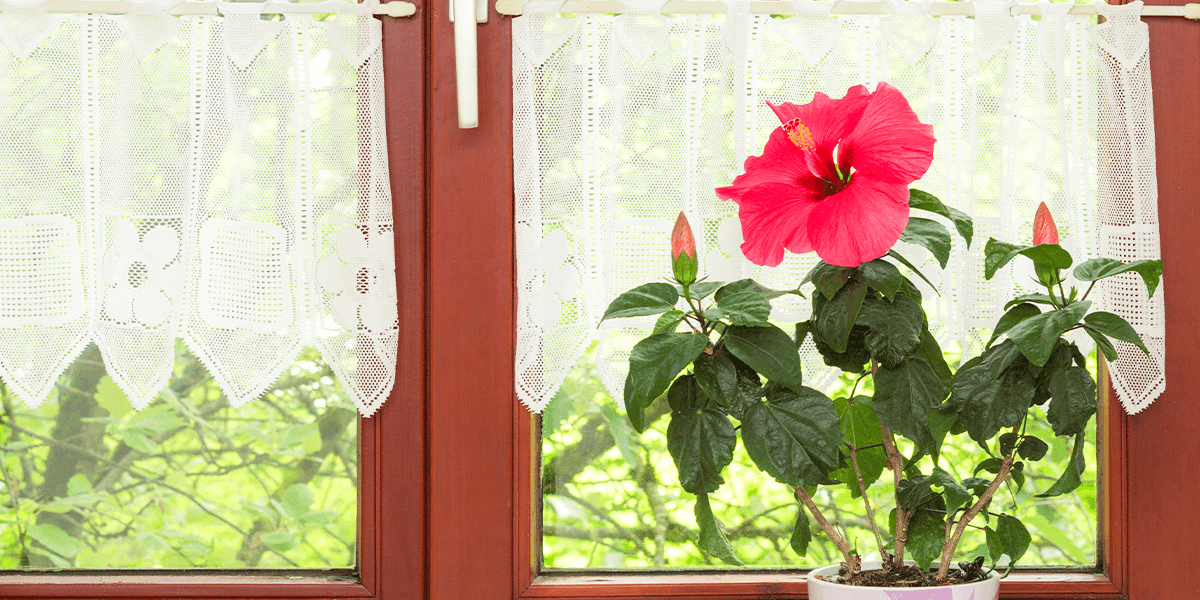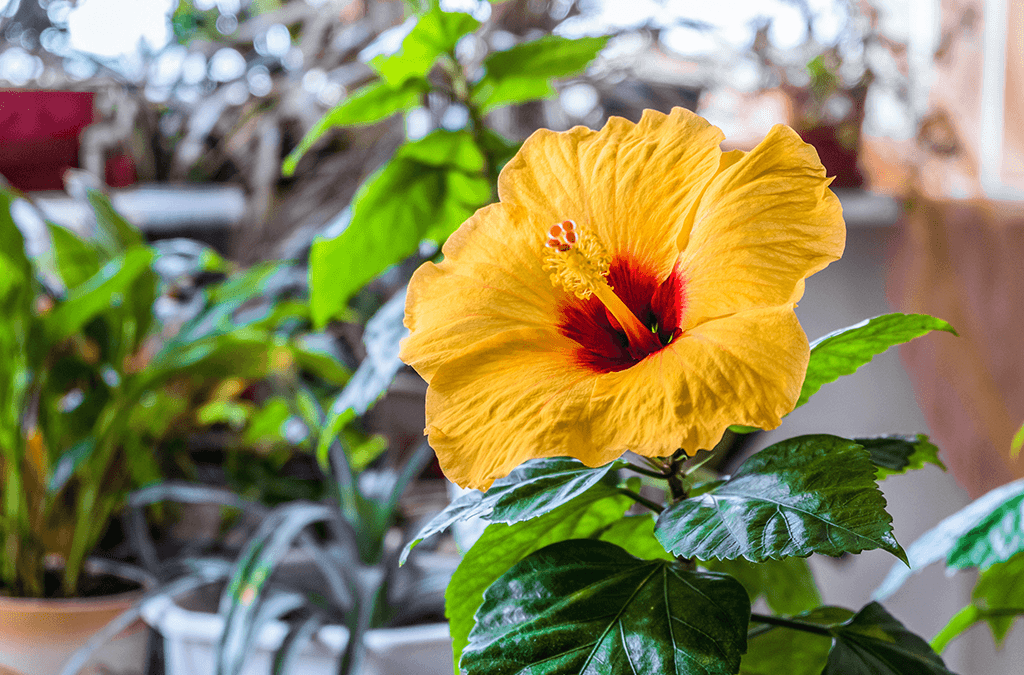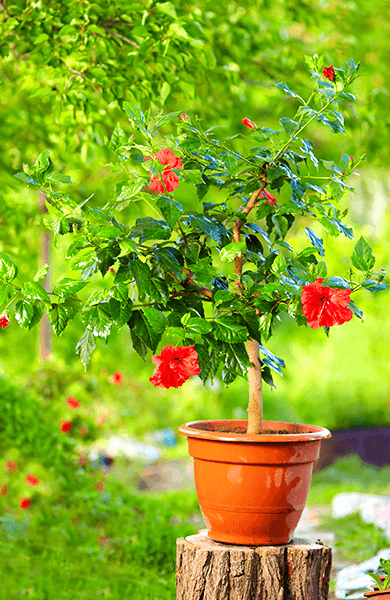Hibiscus are sun-loving, tropical plants that have big showy flowers with a famous, prominent stamen. You don’t need to live in California or Florida to grow them. In temperate climates, you can grow them outside during the summer and enjoy them indoors as houseplants over the winter. Here’s all the information you need to grow these plants inside!
Where Should I Put My Hibiscus Indoors?
All houseplants have an ideal spot where they’ll thrive indoors. As for hibiscus, they like to be near a bright window, where they’ll receive as much sunshine as possible. The sunniest window in your house is the best place for them. They will survive with less rays, but may not bloom.
How Much Should I Water My Hibiscus?
Hibiscus like to be watered, but of course, not over-watered. Once the soil is dry to touch, it’s time to give them a drink. When they’re dormant in the winter, they may not drink as much. On the other hand, because furnaces easily dry out the air, water may evaporate from a plant pot more quickly. It’s best to do a touch test before watering, and establish a watering routine based on that.

Temperatures for Hibiscus
Indoor houseplants can feel the cold and heat just as we do, and their bodies can only tolerate a certain range. Hibiscus thrive at room temperature, but they don’t like the thermometer to dip below 50 degrees. So make sure you’re not keeping them near open doors or windows where they’ll receive a blast of winter weather.
Humidity for Hibiscus
Hibiscus prefer moderate to high humidity indoors. Brown edges on leaves, bud drop, or drooping foliage are signs that they lack humidity. Here are ways to create a humid spot that reminds them of home in the tropics:
- Keep indoor plants away from furnace vents or fireplaces.
- Mist plants weekly with room temperature water.
- Group indoor hibiscus plants together with other plants.
- Set out trays of pebbles and water around houseplants.
Pruning Your Hibiscus for Blooming
Pruning indoor plants encourages more blossoms, but hibiscus bloom on the tips of branches. In other words, pruning removes buds that may take a month or more to regrow. So how and when should you prune?
- Pinch Flowers: When your hibiscus is young, pinching away the first few blossoms actually encourages more flowering. Clipping away one blossom will make several more as the branch regrows.
- Ongoing Pruning: To prune without sacrificing flowers, just clip away the longest branches about every three months. That way, you’ll keep some flower blossoms intact while managing the shape of the plant and stimulating new growth.
- Pruning in Winter: In most cases, hibiscus go semi-dormant during the winter, meaning they won’t be growing much or producing new buds. That means fall is a good time for pruning. It’s best to prune away up to one third of the growth when you move them inside for winter. When blooming starts again, they’ll already be in a desirable shape.
 How to Move Hibiscus Outside for the Summer
How to Move Hibiscus Outside for the Summer
Hibiscus are plants that enjoy a summer holiday outside, where their colorful flowers will light up your garden. Wait until nighttime temperatures are consistently above 50 degrees before you move them. As with other indoor houseplants, make sure you transition them slowly, a few hours per day at first, gradually lengthening their stay over 1-2 weeks.
Move them gradually when you return them inside in the fall as well. Remember to check for hitchhiking pests, and spray them, if necessary, to avoid spreading unwanted guests to your other houseplants.
Even during winter in Illinois, our homes indoors can still be like a tropical jungle. Just make sure the temperature’s right, and the humidity is comfortable. With a few adjustments, hibiscus is just one of many tropical plants that can bring us fresh air and colorful flowers to revive our indoor winter spaces!
Platt Hill Nursery is Chicago’s premier garden center and nursery in the Chicagoland area.



 How to Move Hibiscus Outside for the Summer
How to Move Hibiscus Outside for the Summer